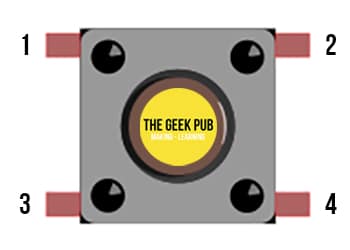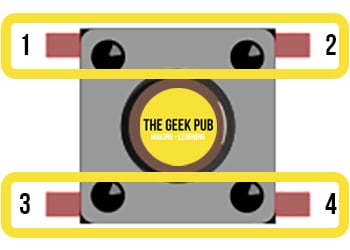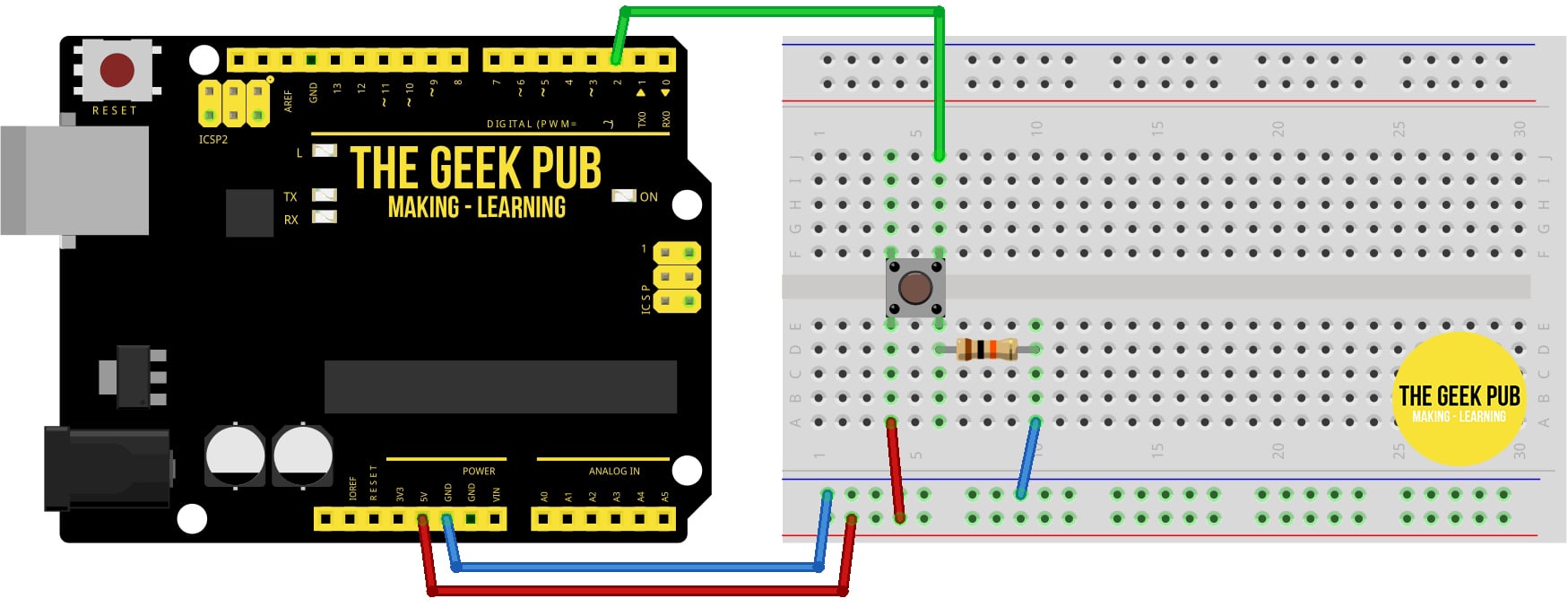Most orders for IN STOCK items placed by 12PM CST M-F ship SAME DAY. Orders for custom items and prints may take additional time to process.
In this beginner series we’re going to go over the basics and need to knows of connecting a button to the Arduino and using it in your sketches. This Arduino button tutorial also covers the basics of the button itself, as it is not always obvious how a button is designed to work under the hood. There are some complex software and electronics issues you can run into!
Before we dive into the Arduino button tutorial itself, it is super important that you understand the basics of buttons themselves. For this section, we’re going to focus primarily on the most common button used in Arduino projects: the momentary push button.
The momentary push button does exactly as it sounds. When you press it, it creates an electrical connection between a set of contacts. When you release it, it disconnects. In other words, the button only passes current when the button is held pressed.
Let’s take a look at a standard button you’ll see in most Arduino kits.

These standard buttons have four pins. 1, 2, 3, and 4. But they might not work the way you would first imagine that they do. Some of the pins are always electrically connected!

In a standard momentary button, pins 1 & 2, and pins 3 & 4 are electrically connected at all times! So you can only switch between pins 1 & 3 and pins 2 & 4! This confuses so many beginners.
So why in the world does the button have more pins than it does switches? Well it turns out the answer is very simple. These buttons are designed to be placed on and soldered to circuit boards. Having four solder points will make sure the switch stays in place without warping when pressed.
However, this also gives us some flexibility when connecting our switches to a project. There are four possible ways to connect wiring to this switch. Use whichever one is easiest in your circuit board or breadboard layouts!

Buttons work by making an electrical connection Internally. When the button is not pressed, no connection is made. When the button is pressed, a connection is created,

Here’s a handy parts list for this project. Some of these are affiliate links. They cost you nothing, but we get a small commission that helps us keep writing awesome tutorials like this one.
| QTY | PART / LINK | ||
|---|---|---|---|
| 1X | Arduino Uno | ||
| 1X | USB Type B Cable | ||
| 1X | Button Kit | ||
| 1X | Resistor Kit (10K Ohm) | ||
| 1X | Solderless Breadboard | ||
| 1X | Jumper Wires |

As we move forward in our Arduino button tutorial, let’s move on to wiring buttons!
Many tutorials on the internet will leave out something that is very important: the need for a pull-down resistor. Your project might work without one, but it also will likely experience all kinds of issues when you start working with anything even slightly outside of the basic tutorial.
A pull-down resistor keeps the digital I/O pin on the Arduino from “floating”. Just touching your Arduino while its running could be enough to make it think the button was pressed, even when it wasn’t!
We will be using a 10K Ohm resistor for this project.
The wiring for this project is quite simple:
Please note: We are using both PIN 1 and PIN 2 on the button only for diagram/wiring simplicity sake, you could just as easily use only PIN 1 or only PIN 2 as they are electrically connected inside the button.

Now let’s put some code on the Arduino and see this button work! This code is designed to light the on-board LED when you press our button. The on-board LED, is electrically connected to PIN 13, and is physically located next to it (next to the T in The Geek Pub on our Arduino button wiring diagram above).
// constants won't change. They're used here to set pin numbers:
const int buttonPin = 2; // the number of the pushbutton pin
const int ledPin = 13; // the number of the LED pin
// variables will change:
int buttonState = 0; // variable for reading the pushbutton status
void setup() {
// initialize the LED pin as an output:
pinMode(ledPin, OUTPUT);
// initialize the pushbutton pin as an input:
pinMode(buttonPin, INPUT);
}
void loop() {
// read the state of the pushbutton value:
buttonState = digitalRead(buttonPin);
// check if the pushbutton is pressed. If it is, the buttonState is HIGH:
if (buttonState == HIGH) {
// turn LED on:
digitalWrite(ledPin, HIGH);
} else {
// turn LED off:
digitalWrite(ledPin, LOW);
}
}
Pressing the button should illuminate the LED, and releasing the button should turn the LED off.
Now that you’ve learned the basics of buttons, we can move on to the next steps or go back to the tutorial index!
If you like our content maybe consider upgrading to Premium. You’ll get access to